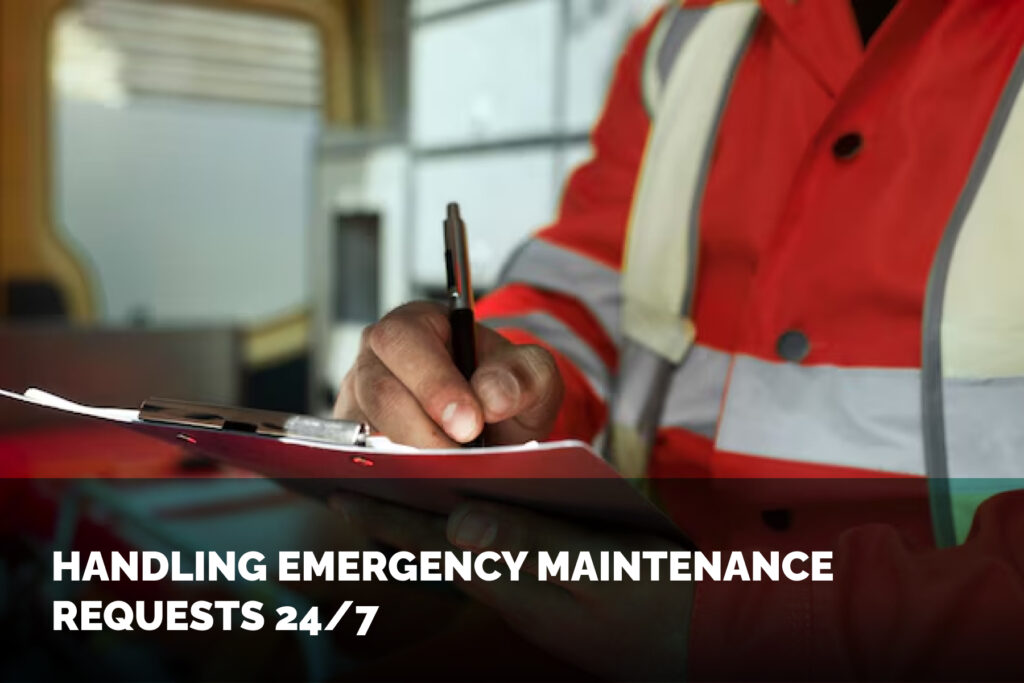When an emergency strikes—whether it’s a burst pipe, no heat in winter, or a gas leak—residents want fast, dependable help. At Summerfield Property Management, we take 24/7 emergency maintenance seriously, combining smart systems, trained teams, and streamlined communication to keep our communities safe and running smoothly.
For property owners and operators, the ability to respond quickly isn’t just good service—it’s risk mitigation, asset protection, and resident retention.
1. Prioritize What Qualifies as Emergency Maintenance
Not all maintenance requests are created equal. That’s why we clearly define emergency vs. non-emergency issues for both residents and staff. This clarity ensures urgent needs are addressed immediately, while routine issues are queued efficiently.
- Examples of Emergency Issues:
- No heat or A/C in extreme weather
- Flooding or major water leaks
- Gas smells or suspected carbon monoxide
- Total power outage (not caused by local utility)
- Inoperable toilets in units with only one bathroom
Pro Tip: Provide residents with clear guidance on what constitutes an emergency, so they know when and how to reach out.
2. Use Technology to Streamline After-Hours Response
Our emergency maintenance process doesn’t rely on chance—it’s powered by tech. Calls to our after-hours hotline are routed through intelligent answering services that document, prioritize, and escalate issues based on urgency.
- Operational Wins:
- Immediate dispatch alerts sent to on-call technicians
- Service requests logged in real time for full visibility
- Escalation paths in place for complex or unresolved issues
Best Practice: Choose systems that integrate with your property management software to ensure seamless communication and recordkeeping.
3. Train and Rotate Dedicated On-Call Teams
Behind the scenes, our response system depends on trained professionals who are ready to act. We rotate on-call schedules and equip maintenance techs with the tools, authority, and support they need to resolve issues quickly.
- Our Approach:
- Defined on-call schedules for balanced team workload
- Clear standard operating procedures for emergency scenarios
- Regular training on safety, communication, and protocol updates
Confidence Boost: Residents feel secure knowing that emergency help isn’t just promised—it’s reliably delivered.
4. Follow Up and Close the Loop with Residents
Once an emergency is resolved, communication doesn’t stop. We follow up with residents to ensure satisfaction, document the fix, and evaluate if further work is needed. This helps build trust and keeps service levels high.
- Resident-Focused Follow-Up:
- Check-in call or message after service
- Digital survey or quick feedback loop
- Internal review for service quality and root cause analysis
Pro Insight: Post-resolution follow-up reduces repeat calls and shows residents you value their comfort and safety.
5. Always Aim for Prevention, Not Just Reaction
True excellence in emergency maintenance comes from prevention. We analyze trends in service requests and perform proactive checks to minimize the chances of emergencies before they happen.
- Preventive Moves:
- Seasonal HVAC inspections and testing
- Leak sensors and water shut-off tech in key units
- Backup systems for power, heating, and plumbing components
Looking Ahead: As technology advances, predictive analytics and IoT sensors will play a bigger role in catching issues before they escalate.
Conclusion
Handling emergency maintenance requests 24/7 isn’t just about responsiveness, it’s about readiness, reliability, and relationships. At Summerfield Property Management, we’ve built a system that supports residents in their most stressful moments and protects property performance around the clock.
Because when residents know help is just a call away, they stay longer, speak highly of the community, and trust that their home is in good hands.


